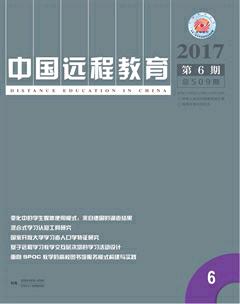英文摘要
Student media usage patterns in transition: Results from a survey in Germany
Olaf Zawacki-Richter and Carina Kramer
A total of 3,666 students at German universities participated in a survey in 2012 (N=2,339) and 2015 (N=1,327), which investigated media usage patterns of traditional and so-called non-traditional students (NTS). The students provided information on the digital devices that they own or have access to, and on their usage of media and e-learning tools and services for their learning. As the development of digital media and educational technology is a dynamic field in higher education, special emphasis is placed on the changes of media usage behaviour between 2012 and 2015.Based on the students responses, a typology of media usage patterns was established by means of a latent class analysis (LCA). Four types or profiles of media usage patterns were identified. These types were labeled entertainment users, peripheral users, advanced users and instrumental users. Non-traditional students are over-represented in the cluster of instrumental users. In general, we find a decrease in the frequency of use of all (digital) media, tools and services from 2012 until 2015. The design of a qualitative research project to further deepen and validate quantitative results of the current study is outlined in this paper.
Keywords: media usage patterns; media usage typology; non-traditional students; instructional design; media selection
A study on cognitive tools for blended learning
Wunong Zhang
Cognitive tools are the key to understanding blended learning in that they play a critical role in its design, implementation and analysis. Based on their respective disciplinary perspectives, cognitive psychology and educational technology have different interpretations and applications of cognitive tools. Therefore, the relationship between these two areas of study needs examining in order to better understand cognitive tools for blended learning. They are constructive, mixed and sophisticated cognitive tools with the function of promoting deep learning rather than simply conveying information, focusing on embodied cognition rather than physical technology, and aiming to expand affordances rather than simplify teaching.
Keywords: blended learning; cognitive tools; deep learning; constructivism; connectivism
Using Merrills First Principles of Instruction to develop SPOC Instructional Design Modelendprint
Jinruo Qin and Gangshan Fu
SPOC is a mixture of MOOC and face-to-face instruction, making the best of both MOOC and classroom teaching and overcoming their respective weaknesses. SPOC is considered to evolve from MOOC, symbolizing a new educational trend in the age of knowledge economy. SPOC instruction has therefore become a hot issue. A review of the SPOC research literature shows that the majority of these studies focused on the features of SPOC without using important instructional principles to inform course design and failed to give full play to the effectiveness of SPOC. For example, no study centered on designing pre-class, in-class and post-class learning activities from learners perspective and how these activities relate to each other effectively. It is argued that Merrills First Principles of Instruction can be drawn upon when designing SPOC instruction. Informed by Merrills theory, this study developed a SPOC instructional design model to facilitate instructional design for SPOC and enhance its effectiveness.
Keywords: First Principles of Instruction; SPOC; instructional design
An investigation of learnersdemographics at the Open University of China (OUC)
Shu Liu, Zhiguo Sun and Ying Wang
Learner analysis is an important step to teaching quality assurance. Demographics are essential to learner analysis. With a full knowledge of their learners demographics, open universities (OU) can better identify their target learners, carry out informed teaching reforms, improve learners learning experience and assure their quality. Given the unique characteristics of OU learners such as massive numbers, diverse compositions, and instability, it is of paramount importance to conduct comprehensive, in-depth, sophisticated, and recurrent analyses of OU learners. Using a quantitative methodology, this study set out to investigate a big sample of OUC learners, collecting and analyzing their demographic data. Findings show that OUC learners are characterized by multi-dimensionality, multi-layering and complexity in terms of regional distribution, age range, and job diversity. It is also found that with the passage of time OUC learners demographics are experiencing both recurrent changes and changes caused by social development. Implications for the construction and development of open universities are discussed.
Keywords: learner analysis; demographics; open and distance education; the Open University of Chinaendprint
Using Instructional Interaction Hierarchical Model to design learning activities
Zhijun Wang, Hong Zhao and Li Chen
The design of learning activities is instrumental in designing and developing online courses for distance learning as well as conducive to deep learning. The design of online learning activities has a direct impact on learning outcomes. Using the Instructional Interaction Hierarchical Model as its theoretical framework, the study set out to explore the definition, classification and composition of learning activities. It is argued that the design of the three kinds of interaction activities (autonomous learning activities, learner-instructor interaction and learner-learner interaction) in the category of informational interaction is the core of the overall design in relation to distance learning activities. Design principles, strategies and issues of concern are identified and implications are discussed.
Keywords: distance learning; online learning; learning activity; autonomous learning; learner-instructor interaction; learner-learner interaction
(英文目錄、摘要译者:肖俊洪)endprint

